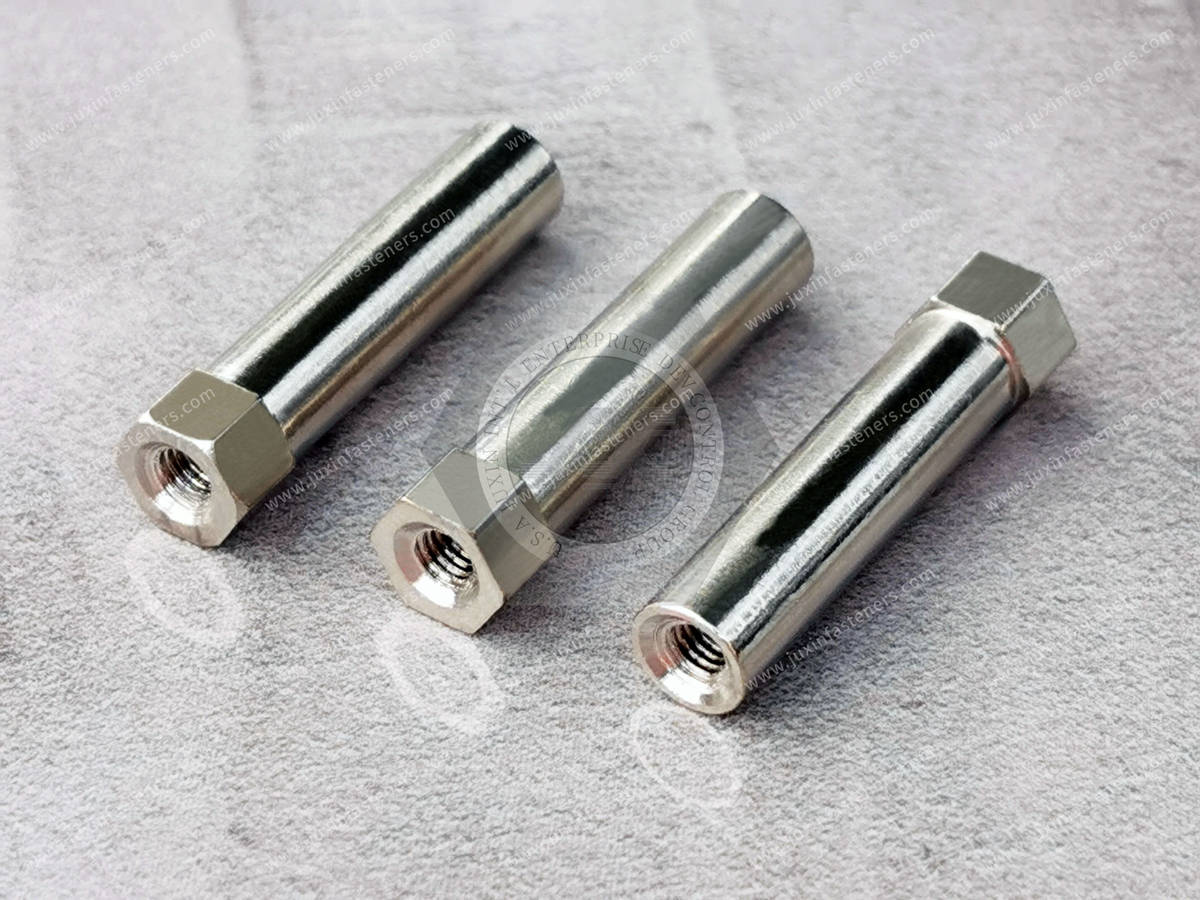Call Us
+86 136 6007 9809
Call Us
+86 136 6007 9809
Material: Brass, Surface treatment electroplating environmental ROHS protection nickel
Product Specification
CNC machining is the main process for producing copper parts in many industries. Copper has good ductility, and electrical and thermal conductivity, and is used in a wide variety of machined copper parts in many industries, including automotive, aerospace, and medical. Copper is also one of the materials that can be easily machined.
101 is pure copper, containing 99.9% copper, and is commonly used to make bronze and brass.
1. Bronze: Bronze is an alloy of tin, copper, and phosphorus that has good hardness and strength and can be used to produce bearings and gears.
2. Brass: Brass is an alloy of zinc and copper with good machinability and hardness. It is suitable for machining low friction and complex parts, such as valves, gears, bearings, and locks, and can also make some outdoor parts.
Advantages and disadvantages of CNC machined brass parts
1. Advantages: good machinability, ductility, impact strength, and good formability in hot and cold processing. CNC-machined copper parts are compatible with a variety of cost-effective surface treatment technologies.
2. Disadvantages: When spot welding copper materials, processes such as coated metal arc welding cannot be used. Different grades of copper have different corrosion resistance. Some CNC-machined copper parts are prone to corrosion in environments containing reactive substances. Consider the application characteristics and cost-effectiveness when selecting
1. Set the feed rate: The feed rate is the speed at which the cutting tool engages the workpiece. It is important to set the correct feed rate before machining copper parts, as it affects the quality, life, and surface finish of the copper part. Copper is highly efficient at conducting heat, and high feed rates increase tool wear over time.
2. Design for manufacturability: Before machining copper, design requirements and specifications must be collated that will help achieve the functionality of the copper part. This includes reducing the number of part setups, and dimensional checks, and preventing deep cavities with small radii.
3. Select the correct tool material: Many bronze sheets are machined softer than aluminum and steel of equivalent strength. This can lead to insert shaping and tool wear. It is important to choose the right tool material. High-speed steel is a suitable tool material for CNC machined bronze.
4. Post-treatment options: In general, copper is used for thermal conductivity and electrical conductivity. Surface finish is used for other machined metals because it inhibits these properties and many surface finishes are not suitable. Surface finishes applicable to copper are shown below.
5. Electrolytic polishing: Copper can be electrolytically polished to obtain a very smooth and shiny surface. This process typically removes small layers of material from the surface between 0.0001 inch (0.00254 mm) and 0.0025 inch (0.0635 mm). Electrolytic polishing can further improve corrosion resistance but does not affect electrical conductivity.
6. Plating: Metal plating of copper, while maintaining electrical and thermal conductivity, often helps prevent oxidation of its outer surface. Precious metal plating (such as silver or gold plating) can provide low contact resistance to maintain excellent electrical conductivity and solderability.
Notes on the use of electroless nickel plating:
1、The plating solution should be circulated and filtered before use to remove the iron chips, rust, and other harmful solid particles in the chemical nickel plating solution. When nickel deposition is found on the bottom of the plating bath, remove the plating solution and clean the bath in time to reduce the loss and ensure the stability of the plating solution.
2, the temperature of the nickel plating layer of phosphorus content and deposition rate has an impact, so the temperature of the solution should be measured frequently, the use of automatic temperature control devices to maintain the temperature of the chemical nickel plating solution in the operating requirements range.
3, timely replenishment and adjustment of the plating solution, to avoid relatively large fluctuations in the composition of the plating solution.
4、Prohibit the unauthorized addition of other substances or heavy metal ion stabilizers or brighteners to the chemical nickel plating solution.
5、Frequently test the pH value of the plating solution to keep the pH value within the process requirements.
Product Packaging
Packing: Inner is Poly foam, out is carton. Then pallet. Carton size: 29*19*19.5CM and 23.5*17.5*8, CM and pallet size is: 215*100*90CM, or as your requirement.
Product Pictures

Packaging & Delivery and Packaging Details
1. Shrink film+wooden box
2. Cardboard box+pallet
3. Color box
4. As per the customer's request
Contact Us
Tel.:
+86 020 8621 0320
+86 020 3121 6067
Technical Support:
Navigation
SEND INQUIREY